The Daily Agenda: Tucson’s busy border
Lots of people are crossing the border these days … Most are just grabbing a bite to eat … Who doesn't like jaguar pics?
Millions of people crossed the border near Tucson last year. Yep, you read that right. Millions.
But they’re not the people you think. They’re people visiting friends, getting dinner, shopping, going to work, and hauling vegetables and industrial goods in trucks, among many other perfectly legal activities.
And the numbers are staggering. Just looking at people who walked or drove across the border into Arizona, it comes to 24 million crossings last fiscal year. Federal officials reported about 188 million legal crossings along the U.S.-Mexico border last fiscal year, which ended Sept. 30.
That’s good news. It means the pandemic-related drop in legal crossings is gone. And that means more people are hanging out with their loved ones, more businesses are thriving, and the ties that bind the U.S. and Mexico are recovering.
Thinking about a number as big as 24 million can be tricky. If we zero in on Nogales, the busiest border city in Arizona, we can get a better sense of what that looks like on the day-to-day. The ports in Nogales handled 7.6 million people in private vehicles last year, along with 2.9 million pedestrians and 378,000 trucks.
So on a typical day, customs officers in Nogales dealt with about 21,000 people in vehicles, 8,000 pedestrians, and 1,000 trucks.
That makes for some busy days for customs officers in Nogales. We like to keep busy, too. Consider upgrading to a paid subscription so we can keep working.
How does that compare to the people you normally hear about – migrants trying to hide from Border Patrol agents and asylum seekers who flag down agents?
Legal crossings at ports of entry are on a whole different scale than crossings by migrants and asylum seekers.
Obviously, there are different concerns with each of those groups. And to be fair, a lot of the legal crossings come from people who cross the border daily to go to work.
But it’s good to remember every once in a while that the border is not just a desert backdrop to a cat-and-mouse law enforcement game. People live and work there.
As for migrants and asylum seekers encountered by Border Patrol agents in the desert and mountains in Southern Arizona, here are the broad strokes of what happened along the border last fiscal year.
The Tucson Sector is the busiest area on the U.S.-Mexico border and has been for three straight months. The Border Patrol reported about 370,000 encounters last fiscal year.
The Yuma Sector has quieted down quite a bit.
More than half the people encountered in the Tucson Sector were traveling as families in recent months.
The most common nationalities in the Tucson Sector were Mexico, Guatemala, Ecuador, and India. Migrants from Mexico accounted for about half of all encounters in the Tucson Sector.
More asylum seekers are going to ports of entry along Arizona’s border with Mexico. Those ports handled about 29,000 people, many of whom likely were asylum seekers, in addition to the regular crossings. That’s nearly three times as many as the previous year and four times as many as fiscal 2021.
Those asylum seekers also are passing through Tucson. Pima County officials put out weekly updates on their efforts to care for asylum seekers, most of whom spend a couple days at places like the Casa Alitas Welcome Center while they arrange travel to their final destinations. Those reports show a big increase in people being bused from ports of entry to Casa Alitas.
So between the return of legal traffic to pre-pandemic levels and a sharp increase in migrants and asylum seekers, the border near Tucson is busier than it’s been in quite a while.
And those legal crossings are putting the Tucson area well on its way to rebuilding the cross-border connections that were lost during the pandemic.
Here, kitty kitty: The Center for Biological Diversity has released the first photos of a mystery jaguar spotted in the Huachuca Mountains earlier this year, the Arizona Luminaria’s John Washington writes. The Luminaria shared the photos, which the center obtained from U.S. Customs and Border Protection and the Arizona Game and Fish Department through a public records request. These are the first sightings of a jaguar in the Huachuca range since 2017. The cat could be El Jefe, Sombra or a new family member.
Inactive commission: The official advisory board to the mayor and city council on LGBTQ+ issues hasn’t met for more than a year due to scheduling issues, Lookout’s Joseph Darius Jaafari reports. The Tucson Commission on Gay, Lesbian, Bisexual and Transgender Issues is the only city commission to address such issues. The last visible action by the commission was in March 2022, when members sent a letter to the mayor and council objecting to two state bills, which were both eventually signed into law by Gov. Doug Ducey. The commission stopped meeting a few months later, despite scheduled meetings through the end of the year.
Marketplace repurposing: The owner of the Oro Valley Marketplace has proposed creating a central recreation area with exercise stations, horseshoe pits, ramadas, benches and more inside of the retail center, Tucson Local Media’s Dave Perry writes. Representatives from Town West discussed the proposal during a public hearing Monday, with the Oro Valley Planning and Zoning Commission expected to make its recommendation to the town council next Wednesday. The company will foot some of the bill, but is asking for supplemental funds from the government or other sources to “fulfill the vision for a full-blown, publicly accessible entertainment district.”
Drastic measures: Mount Lemmon residents and businesses are being asked to reduce their water usage by 50%, due to a lack of rain and snow in the last year, KOLD’s Shelby Slaughter reports. People are currently prohibited from washing cars, doing laundry, watering landscapes and more, with violators facing fines of up to $900. Mount Lemmon Water is in a Stage 3 Alert, but an increase to Stage 4 would mean a 75% decrease in water use and water rationing. Speaking of Mount Lemmon, the U.S. Forest Service put out an announcement that Rose Canyon Lake was “closed,” but later clarified that it’s just closed to swimmers and boats.
Addressing equity: A project to address disproportionate impact of extreme heat on Hispanic communities led by local group Amistades Inc. is one of six Arizona projects that receive federal funding to address environmental justice inequities, the Arizona Republic’s Joan Meiners reports. The project will focus on building resilience to heat severity in the 85706 zip code. The area has a higher-than-average head index and lower-than-average tree shade.
TEDx on campus: TEDxUArizona is happening Nov. 1 at Centennial Hall, with topics including climate, tribal data and sovereignty and communicating through dance, UA News’ Andy Ober writes. This year’s event, themed “Spirit of Wonder,” includes three sessions with three to five speakers and a performance in each, with presenters available for a meet-and-greet after each session. Tickets are $5 each and cover attendance to any or all of the sessions. During January’s inaugural TEDxUArizona, attendance was capped at 100, but organizers are expecting 1,000 to 1,500 for this event.
0.19: The inches of rain that fell at the Tucson International Airport during the storm that came through town on Tuesday.


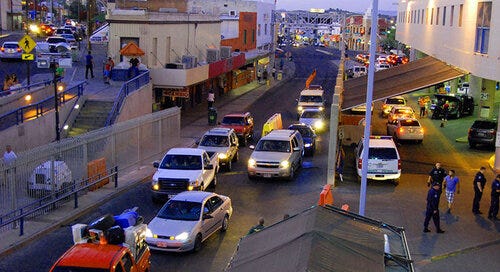


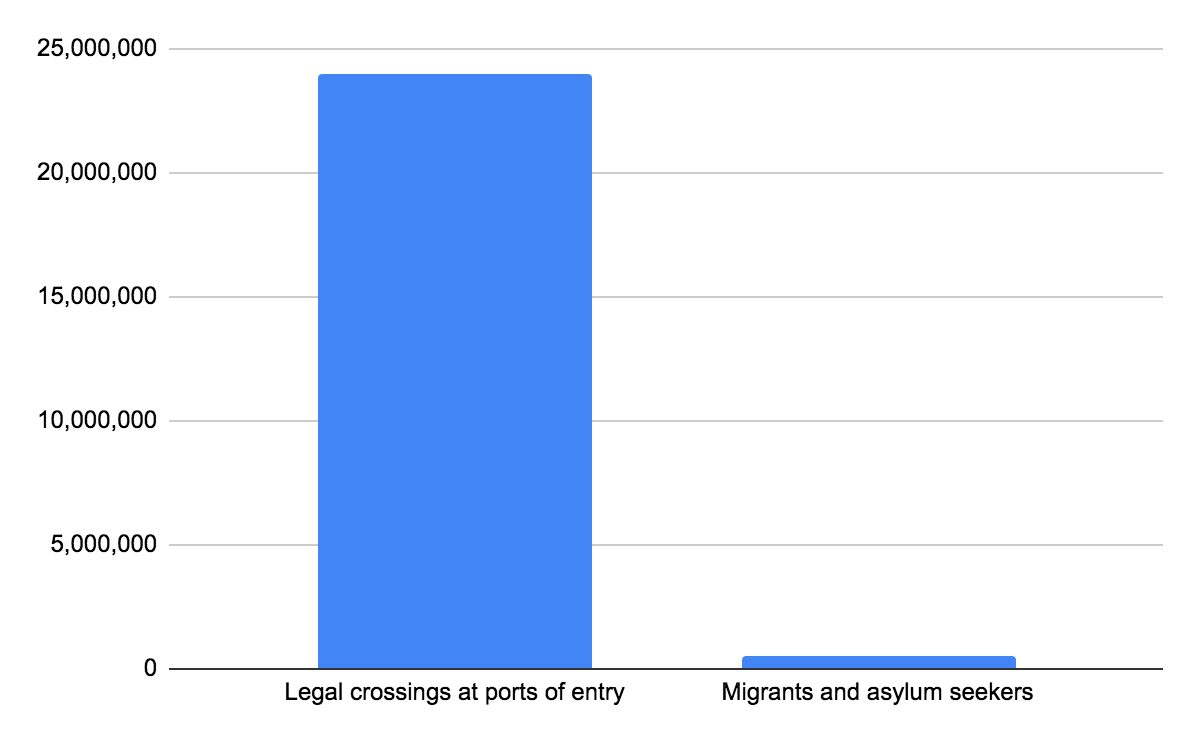
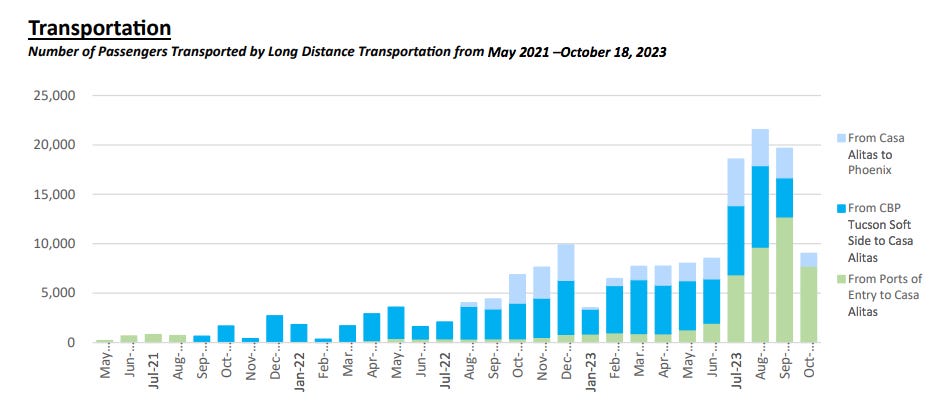


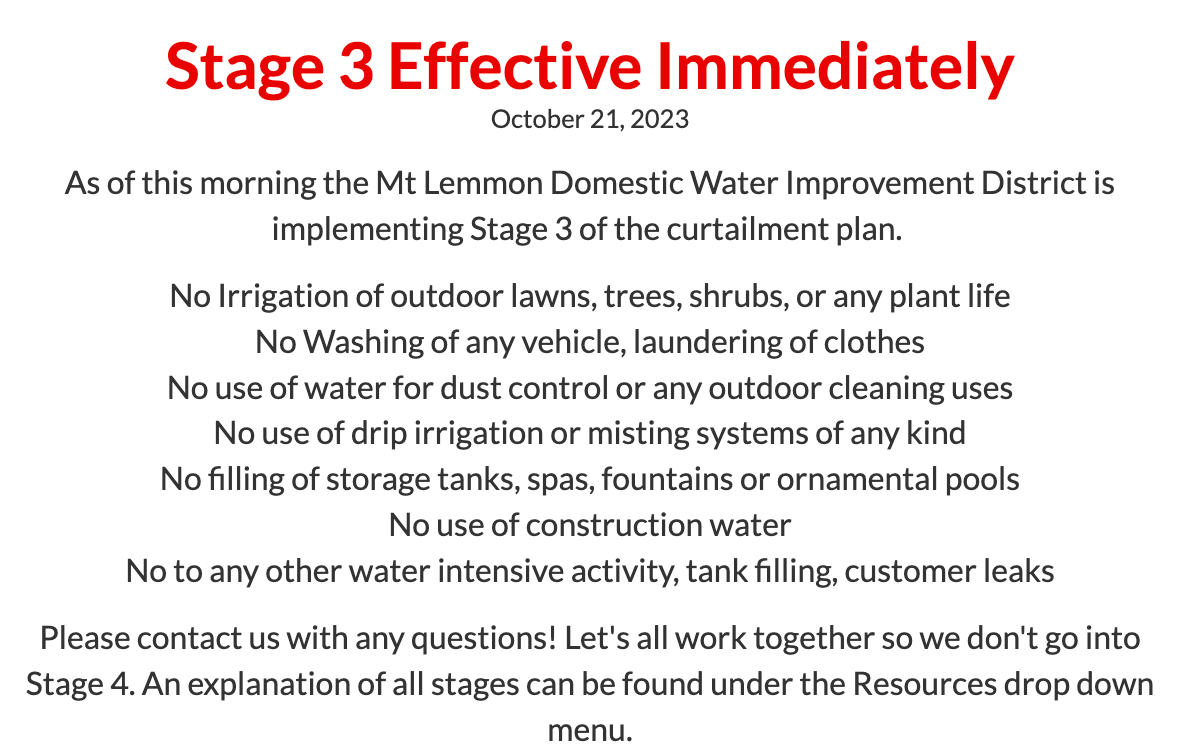

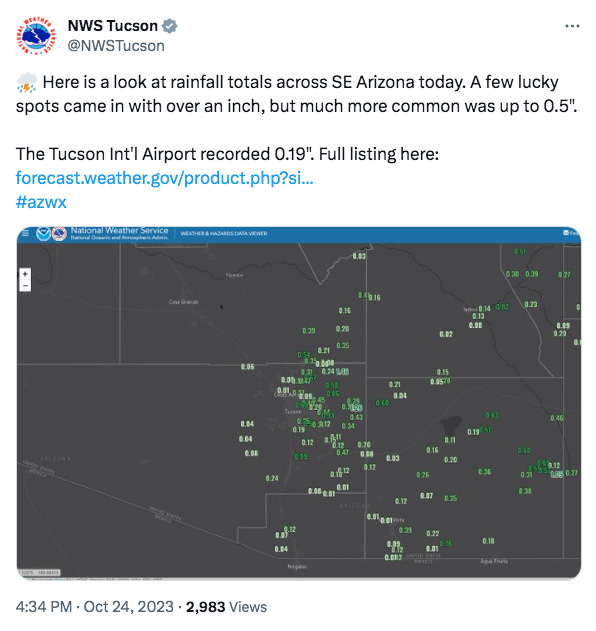
Loved the border stats! Thanks.
How interesting to compare legal border crossings with migrants and asylum seekers. Provides some perspective. Also, while TIA got a measly .19 inches of rain this week, at our house at Broadway and Rosemont our rain gauge recorded 1.6 inches with rain including lots of hail!